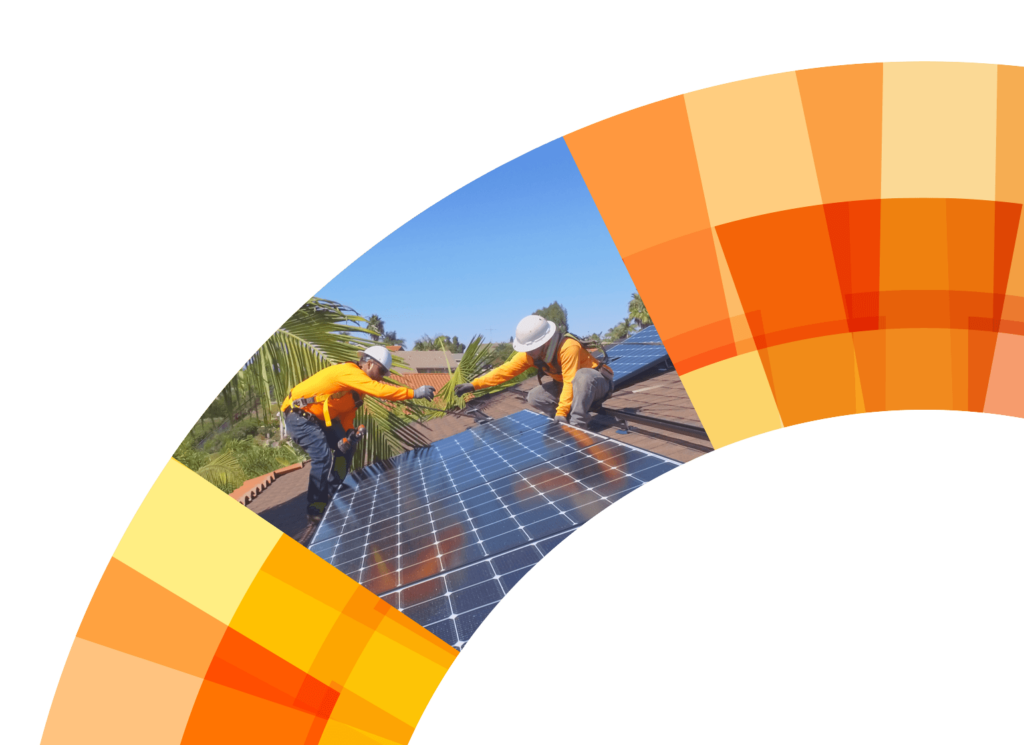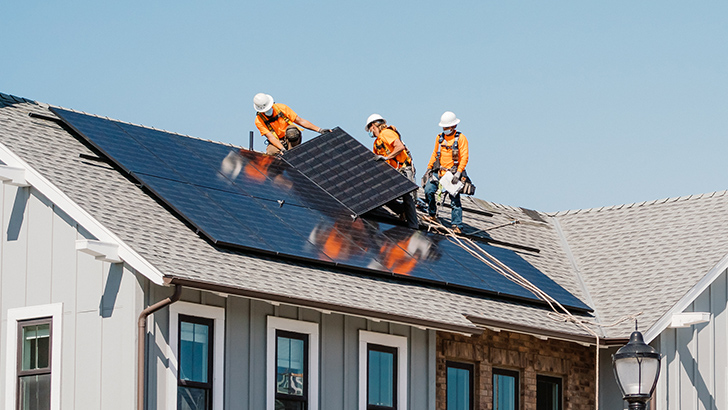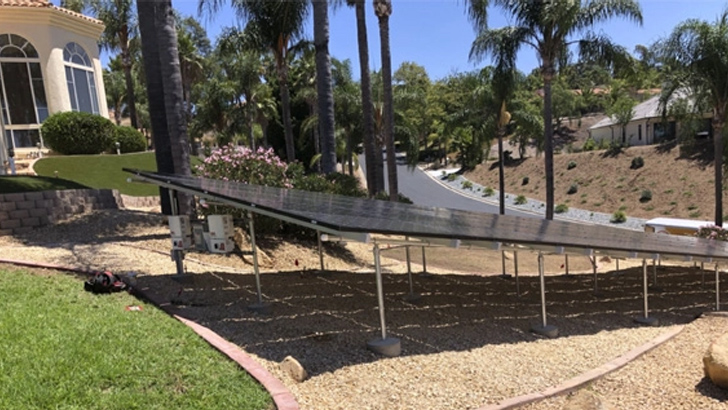Roof-mounted systems are anchored directly to your roof through a series of roof attachments, module clamps, and mounting rails. This is the most commonly installed system because for most homeowners it offers the most space-saving, sun-light absorbing solution.
Roof and Ground Mounted Systems


Roof-mounted systems

Ground-mounted systems
A traditional ground-mounted solar PV system is anchored to the ground, holding several stacked panels with two rails supporting the panels. Panels can be positioned in either landscape or portrait format.
A tracking ground-mounted solar panel system includes a motorized system that tracks the sun throughout the day, making sure your panels are always facing the sun.
Solar Panel Mounting FAQs: Roof vs. Ground Systems
If your roof is in good condition, gets sunlight without extreme shading, and has a decent amount of space, you might be a good candidate for a roof-mounted system. Some shading can even be reduced by trimming nearby trees. Your solar panels may even offer a layer of protection from heat, UV light, rain, etc. for your roof. Not sure about your roof’s condition? Ask us and we can help.
What are the benefits?
- Maximizing sun exposure is the most obvious goal of your system placement, and with Southern California perfectly located for loads of direct sunlight, it doesn’t matter which direction your roof faces — odds are you’ve got free sunshine to use.
- Installing solar panels on your roof is the best way to put that empty space to work. You can effectively add a return-earning investment without taking up any valuable land space.
- Installation costs are typically lower than a ground-mounted system, and your panels are less likely to experience damage from any ground-level accidents.
What are the drawbacks?
- The number of panels you can install is limited by the space you have available on your roof. This would only be an issue if your energy needs require more panels than you have space for, though.
One of the most common questions we hear is, “what is the footprint of a ground-mounted solar system?”. This could range from the size of a car to the size of a football field depending on your energy needs. Most will fall closer to the size of a school bus.
If you’ve got room and you’d happy with allocating that space, you might be a good candidate for a ground-mounted system.
What are the benefits?
- Ground-mounted systems offer a great alternative if your roof isn’t ideal for a solar panel system and you have some open land.
- With ground mounts, we have more control over positioning and can choose angle alignment for maximum energy production. All this leads to more savings for you!
- Ground mounts allow more air circulation under your solar panels, which helps them stay cool.
- Maintenance is naturally easier since your system is at ground level.
What are the drawbacks?
- Installation can be a bit more involved since we first need to build the structure (vs. having a roof structure already).
- While you’ll be making good use of it, you need to plan 25+ years in advance how you want to use your land because once you’ve installed your system, you don’t want to move it.